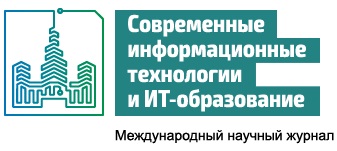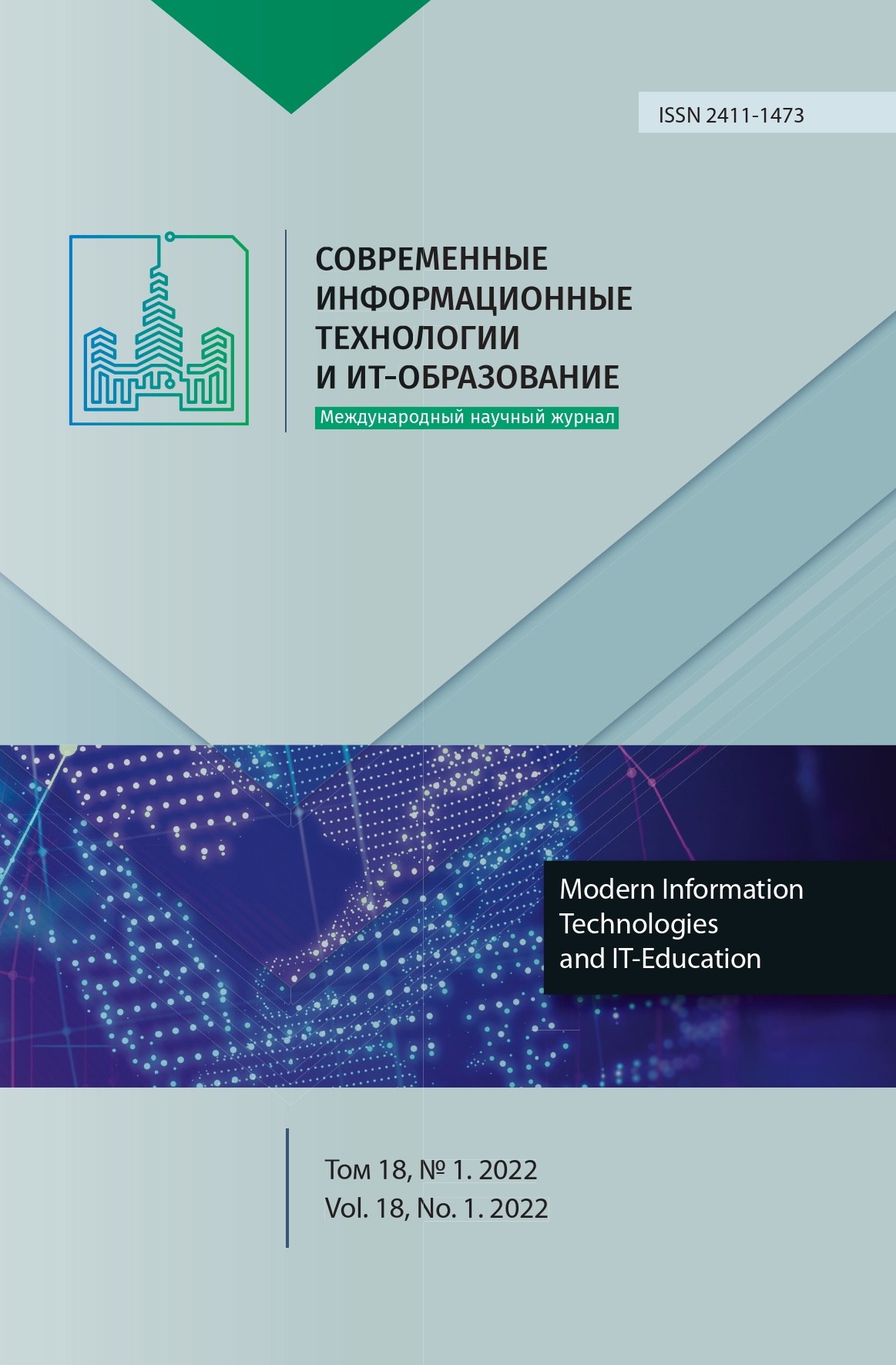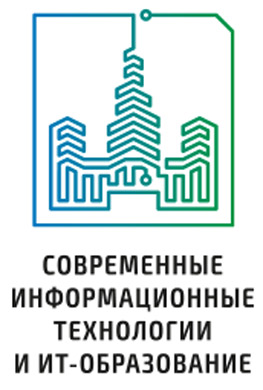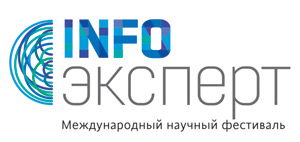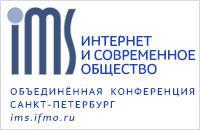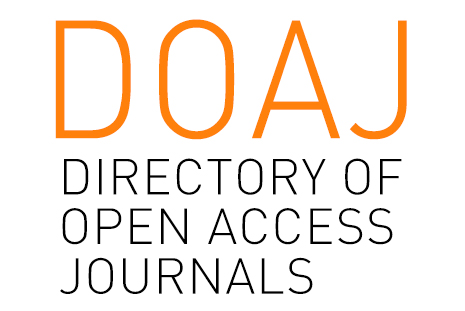Порядок слов в русской разговорной речи как фактор неопределённости при визуальном восприятии её человеком
Аннотация
Статья посвящена актуальной проблеме в области визуального восприятия человеком устной речи по артикуляции говорящего. Качество артикуляции определяет результат этого процесса. Рассмотрены разновидности русской речи и дано описание их отличительных особенностей. Определены типологические признаки единиц речевой деятельности с учётом их структуры и форм восприятия. Представлен материал исследования формирования и восприятия устной разговорной речи. Уделено внимание особенностям разговорной спонтанной речи, как основной и более распространённой формой речи. Характер спонтанной речи проявляется в её неподготовленности, разнообразных отклонениях от норм подготовленной речи и постоянном изменении коммуникативных условий. Одной из основных задач в понимании человеком слитной речи является разбиение речевого сигнала в виде непрерывного потока на отдельные компоненты. Коммуникаторы отмечают границы слов в своей речи с использованием пауз между ними и более чёткого их произнесения. Сосредоточено внимание на гибком словопорядке в устной разговорной речи. Компоненты высказывания занимают в нём определённые позиции в зависимости от заложенного коммуникатором определённого смысла. Исследованы отличительные особенности фонетического и визуального распознавания устной разговорной речи в условиях изменения порядка в ней компонентов. Такой порядок в ней используется коммуникатором непреднамеренно или умышленно для достижения определённой цели. Приведены примеры возможных комбинаций перестановки компонентов высказывания с использованием материале разработанного корпуса омовиземных слов. Взаимозаменяемость таких слов отражается на качестве восприятия речи. Определены все слова со схожими виземами по заданному компоненту высказывания без учёта псевдослов. Полученные результаты могут быть использованы специалистами, занимающимися проблемами описания артикуляционной составляющей разговорной речи и разработкой программ, основанных на их распознавании. Проявленный к данной теме интерес лингвистов во многих странах говорит об её актуальности.
Литература
2. Fazlyeva Z.Kh. Mesto molodezhnogo zhargona v sisteme russkogo jazyka [The role of youth jargon within the system of Russian language]. Litera. 2020; (4):37-45. (In Russ., abstract in Eng.) doi: https://doi.org/10.25136/2409-8698.2020.4.30799
3. Xiao J., Yang S., Zhang Y., Shan S., Chen X. Deformation Flow Based Two-Stream Network for Lip Reading. 2020 15th IEEE International Conference on Automatic Face and Gesture Recognition (FG 2020). IEEE Press, Buenos Aires, Argentina; 2020. p. 364-370. (In Eng.) doi: https://doi.org/10.1109/FG47880.2020.00132
4. Mar’yanchik V.A., Onegina A.S. Nositel' yazyka vs nositel' prostorechiya: otsenka yazykovoy kompetentsii inostrantsev [Native Speaker vs Vernacular Speaker: Assessing Foreigners’ Language Competence]. Vestnik Severnogo (Arkticheskogo) federal'nogo universiteta. Seriya: Gumanitarnyye i sotsial'nyye nauki = Vestnik of Northern (Arctic) Federal University. Series Humanitarian and Social Sciences. 2021; (1):50-60. (In Russ., abstract in Eng.) doi: https://doi.org/10.37482/2687-1505-V074
5. Kholodkova M.V. Funktsional'no-semanticheskaya spetsifika prostorechnoy leksiki v sovremennom russkom yazyke [Functional-semantic specificity of the colloquial vocabulary in the modern Russian language]. Vestnik Moskovskogo gosudarstvennogo oblastnogo universiteta. Seriya: Russkaya filologiya = Bulletin of Moscow Region State University. Series: Russian Philology. 2018; (5):130-138. (In Russ., abstract in Eng.) doi: https://doi.org/10.18384/2310-7278-2018-5-130-138
6. Kropacheva M.A., Litvinova E.S. Aktual'nyye voprosy razgranicheniya ponyatiy prostorechiye, obshchiy zhargon i sleng v russkoy lingvistike [To the Issue of Defining and Distinguishing Vernacular, Common Slang and Slang in Russian]. Vestnik NGU. Serija: Lingvistika i mezhkul'turnaja kommunikacija = NSU Vestnik. Series: Linguistics and Intercultural Communication. 2020; 18(2):79-90. (In Russ., abstract in Eng.) doi: https://doi.org/10.25205/1818-7935-2020-18-2-79-90
7. Ganzeyeva E.O. Problemy vospriyatiya i ponimaniya ustnoy rechi: ot istorii k sovremennosti [The Problem of Oral Speech Perception and Understanding: from History to Modernity]. Vestnik Minskogo gosudarstvennogo lingvisticheskogo universiteta Seriya 2: Pedagogika, psikhologiya, metodika prepodavaniya inostrannykh yazykov = Minsk State Linguistic University Bulletin. Series 2: Pedagogy, psychology, methods of foreign language teaching. 2018; (1):66-72. Available at: https://www.elibrary.ru/item.asp?id=47160510 (accessed 13.01.2022). (In Russ., abstract in Eng.)
8. Shastina G.N. Vosprijatie rechi v svete jeksperimental'no-foneticheskih dannyh [Speech perception in the light of experimental phonetic data]. Vestnik gumanitarnogo fakul'teta Ivanovskogo gosudarstvennogo himiko-tehnologicheskogo universiteta = Bulletin of the Humanities Institute of ISUCT. 2008; (3):302-306. Available at: https://www.elibrary.ru/item.asp?id=16991058 (accessed 13.01.2022). (In Russ.)
9. Tareva E.G. Ustnaya mezhkul'turnaya kommunikatsiya: problemy trudnostey ponimaniya [Intercultural communication: problems with listening comprehension]. Vestnik Permskogo nacionalʹnogo issledovatelʹskogo politehničeskogo universiteta. Problemy âzykoznaniâ i pedagogiki = PNRPU Linguistics and Pedagogy Bulletin. 2018; (1):71-82. (In Russ., abstract in Eng.) doi: https://doi.org/10.15593/2224-9389/2018.1.7
10. Abdurakhmanova N. Formirovaniye lingvisticheskoy i kommunikativnoy kompetentsiy v protsesse obucheniya funktsiyam poryadka slov v russkom predlozhenii [Formation of linguistic and communicative competences in the process of learning the functions of word order in the Russian sentence]. Sovremennoye pedagogicheskoye obrazovaniye = Modern Pedagogical Education. 2019; (5):137-141. Available at: https://www.elibrary.ru/item.asp?id=38188193 (accessed 13.01.2022). (In Russ., abstract in Eng.)
11. Yuzhannikova M.A. Dvusmyslennost' i ee realizacija v stilisticheskoj sisteme russkogo jazyka [Ambiguity and its implementation into the stylistic system of Russian language]. Aktual'nye problemy stilistiki = Аctual Problems of Stylistics. 2017; (3):89-94. Available at: https://elibrary.ru/item.as-p?id=36515720 (accessed 13.01.2022). (In Russ., abstract in Eng.)
12. Murashov A., Shmatko N. Dvusmyslennost': rechevaja oshibka i "Jazykovaja igra" [Ambiguity: Speech Mistake and "Language Game"]. Ural'skij filologicheskij vestnik. Seriya: YAzyk. Sistema. Lichnost': lingvistika kreativa = Ural Philological Bulletin. Series: Language. System. Personality: linguistics of creativity. 2016; (2):169-175. Available at: https://www.elibrary.ru/item.asp?id=26465433 (accessed 13.01.2022). (In Russ., abstract in Eng.)
13. Barkhudarova E.L. Osnovy sopostavleniya foneticheskikh sistem izuchayemogo i rodnogo yazykov v kontekste obucheniya proiznosheniyu [Fundamentals of comparing the phonetic systems of a foreign and native language in the context of teaching pronunciation]. Vestnik Moskovskogo universiteta. Seriya 9. Filologiya = Moscow University Philology Bulletin. 2015; (3):139-154. Available at: https://elibrary.ru/item.asp?id=25359937 (accessed 13.01.2022). (In Russ., abstract in Eng.)
14. Cheng S., et al. Towards Pose-Invariant Lip-Reading. ICASSP 2020-2020 IEEE International Conference on Acoustics, Speech and Signal Processing (ICASSP). IEEE Press, Barcelona, Spain; 2020. p. 4357-4361. (In Eng.) doi: https://doi.org/10.1109/ICASSP40776.2020.9054384
15. Myasoyedova M.A., Myasoedova Z.P. Computer assessment of how well a person visually recognizes verbal Russian speech. 2018 IEEE 12th International Conference on Application of Information and Communication Technologies (AICT). IEEE Press, Almaty, Kazakhstan; 2018. p. 1-5. (In Eng.) doi: https://doi.org/10.1109/ICAICT.2018.8747072
16. Tezekbayeva G.A. Spontannaya rech' kak ob"yekt lingvistiki [Spontaneous speech as a subject of linguistics]. Vestnik VGU. Seriya: Filologiya. Zhurnalistika = Proceedings of Voronezh State University. Series: Philology. Journalism. 2011; (1):76-79. Available at: https://www.elibrary.ru/item.asp?id=16444853 (accessed 13.01.2022). (In Russ., abstract in Eng.)
17. Cutler A., Butterfield S. Word boundary cues in clear speech: A supplementary report. Speech Communication. 1991; 10(4):335-353. (In Eng.) doi: https://doi.org/10.1016/0167-6393(91)90002-B
18. Liew A.W.-C., Wang S. Visual Speech Recognition: Lip Segmentation and Mapping. IGI Global, Hershey, PA; 2009. 572 p. (In Eng.) doi: https://doi.org/10.4018/978-1-60566-186-5
19. Podoynitsyna A.A. Sravnitel'naya tipologiya poryadka slov v predlozheniyakh so strukturoy p-s-d v russkom i angliyskom yazykakh [Comparative analysis of order of sentences with the structure S-P-O in the Russian and English languages]. Proceedings of the International scientific and practical competition on Best Scientific Article 2016. Nauka i Prosveshhenie Publ., Penza; 2016. p. 260-263. Available at: https://www.elibrary.ru/item.asp?id=27409092 (accessed 13.01.2022). (In Russ., abstract in Eng.)
20. Shao P.J. Sopostavleniye poryadkov komponentov appozitsionnoy konstruktsii v russkom i kitayskom yazykakh i perevodcheskiy analiz [Comparison of the orders of appositional construction components in Russian and Chinese and translation analysis]. Sovremennoye pedagogicheskoye obrazovaniye = Modern Pedagogical Education. 2020; (8):116-119. Available at: https://www.elibrary.ru/item.asp?id=43978080 (accessed 13.01.2022). (In Russ., abstract in Eng.)
21. Lu H. Kul'tura poryadka slov v russkom yazyke [The Culture of Russian Language Order]. Innovatsii i Investitsii = Innovation & Investment. 2015; (11):285-291. Available at: https://elibrary.ru/item.asp?id=25916250 (accessed 13.01.2022). (In Russ., abstract in Eng.)
22. Jang D., Kim H., Je C., Park R., Park H. Lip Reading Using Committee Networks With Two Different Types of Concatenated Frame Images. IEEE Access. 2019; 7:90125-90131. (In Eng.) doi: https://doi.org/10.1109/ACCESS.2019.2927166
23. Slioussar N.A. Russkiy poryadok slov v tipologicheskoy perspektive: pozitsii podlezhashchego v imenitel'nom padezhe i nekotorykh glagol'nykh form [Russian word order in the typological perspective: positions of nominative subjects and different verb forms]. Vestnik Sankt-Peterburgskogo universiteta. Yazyk i literature. Seriya 9 = Vestnik of Saint Petersburg University. Language and Literature. Series 9. 2008; (1-2):217-225. Available at: https://www.elibrary.ru/item.asp?id=11160321 (accessed 13.01.2022). (In Russ., abstract in Eng.)
24. Kavand M., Zakhrai S. Poryadok slov kak sredstvo vyrazheniya kategorii opredelennosti-neopredelennosti v russkom yazyke i sposoby peredachi yeye znacheniya na persidskiy yazyk [Word order of as a means of expression of the categoriy of cеrtainty-uncertainty in Russian and methods to convey its meaning to Persian]. Vestnik Tomskogo gosudarstvennogo pedagogicheskogo universiteta = Tomsk State Pedagogical University Bulletin. 2018; (2):148-152. (In Russ., abstract in Eng.) doi: https://doi.org/10.23951/1609-624X-2018-2-148-152
25. Nerusheva T.V. Norma i otkloneniya v poryadke slov v russkom predlozhenii [Norm and deviations in the word order of Russian sentence]. Gumanitarnyye nauki i obrazovaniye = The Humanities and Education. 2019; 10(4):153-158. Available at: https://www.elibrary.ru/item.asp?id=42318518 (accessed 13.01.2022). (In Russ., abstract in Eng.)

Это произведение доступно по лицензии Creative Commons «Attribution» («Атрибуция») 4.0 Всемирная.
Редакционная политика журнала основывается на традиционных этических принципах российской научной периодики и строится с учетом этических норм работы редакторов и издателей, закрепленных в Кодексе поведения и руководящих принципах наилучшей практики для редактора журнала (Code of Conduct and Best Practice Guidelines for Journal Editors) и Кодексе поведения для издателя журнала (Code of Conduct for Journal Publishers), разработанных Комитетом по публикационной этике - Committee on Publication Ethics (COPE). В процессе издательской деятельности редколлегия журнала руководствуется международными правилами охраны авторского права, нормами действующего законодательства РФ, международными издательскими стандартами и обязательной ссылке на первоисточник.
Журнал позволяет авторам сохранять авторское право без ограничений. Журнал позволяет авторам сохранить права на публикацию без ограничений.
Издательская политика в области авторского права и архивирования определяются «зеленым цветом» в базе данных SHERPA/RoMEO.
Все статьи распространяются на условиях лицензии Creative Commons «Attribution» («Атрибуция») 4.0 Всемирная, которая позволяет другим использовать, распространять, дополнять эту работу с обязательной ссылкой на оригинальную работу и публикацию в этом журналe.
